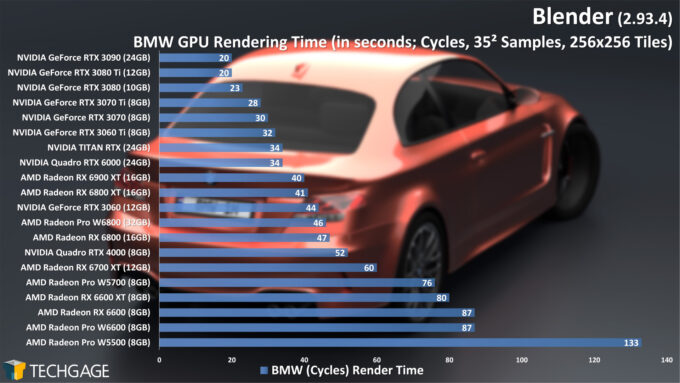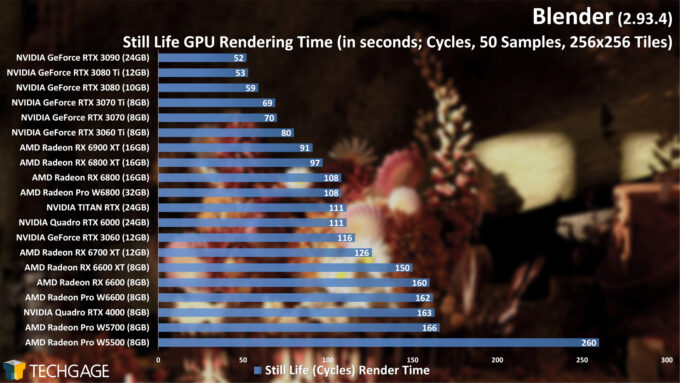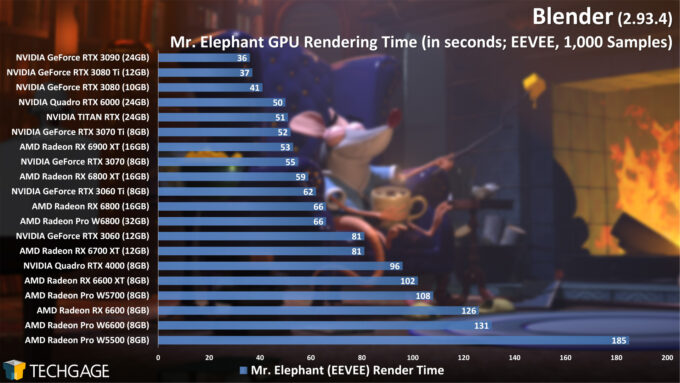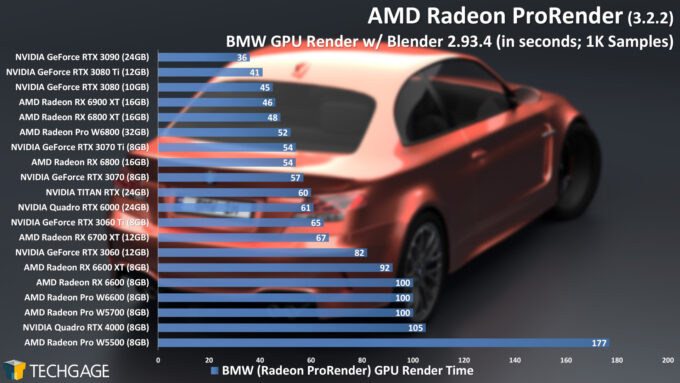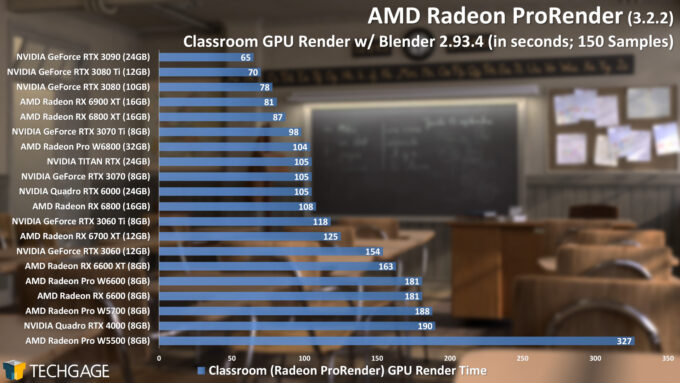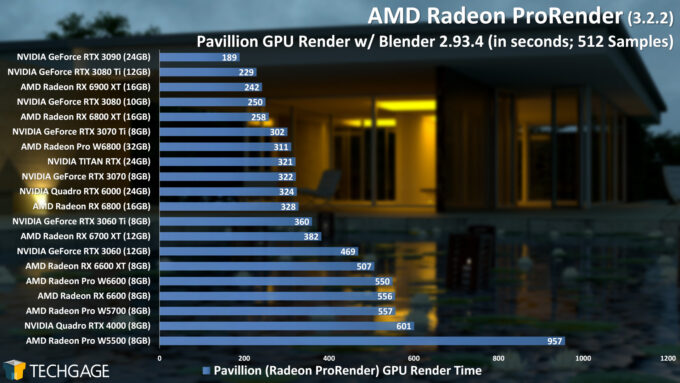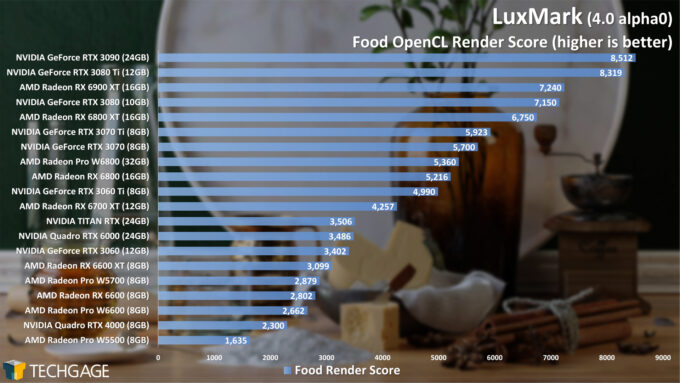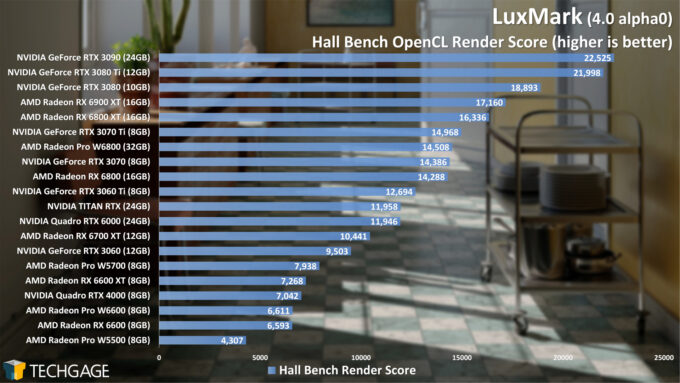- Qualcomm Launches Snapdragon 4 Gen 2 Mobile Platform
- AMD Launches Ryzen PRO 7000 Series Mobile & Desktop Platform
- Intel Launches Sleek Single-Slot Arc Pro A60 Workstation Graphics Card
- NVIDIA Announces Latest Ada Lovelace Additions: GeForce RTX 4060 Ti & RTX 4060
- Maxon Redshift With AMD Radeon GPU Rendering Support Now Available
RDNA2 For Workstation: AMD Radeon Pro W6600 & W6800 Review
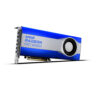
AMD has so far released two Radeon Pro models built around its RDNA2 architecture – W6600 and W6800 – and compared to the previous-gen, there’s a lot of improvement. In addition to faster performance in general, we see additions like hardware RT, as well as support for resizable BAR and variable rate shading. Let’s see how both cards fare in our gauntlet of tests.
Page 2 – Rendering: Blender, Radeon ProRender & LuxMark
Blender
Much to AMD’s chagrin, we’re sure, NVIDIA has a bit of a stranglehold over Blender performance right now. That’s something that applies whether we’re talking rendering with Cycles or EEVEE, or editing inside of the viewport. With the purely apples-to-apples Cycles results above, it’s clear that NVIDIA’s Ampere architecture really suits this workload, because even the lowbie GeForce RTX 3060 Ti manages to beat out not just AMD’s top-end GPUs, but even NVIDIA’s own last-gen top-end GPUs (eg: TITAN RTX).
What’s notable about these Cycles results is that NVIDIA’s GPUs weren’t tested with the OptiX API, which would have resulted in even greater performance deltas. Unfortunately for AMD, the EEVEE render engine gives us similar scaling:
On the Radeon Pro side specifically, we can see that AMD’s workstation cards perform right alongside the respective gaming counterparts – eg: the W6800 delivers the same performance as the RX 6800. You’ll notice RX 6800 is not AMD’s top-end GPU, so there’s still room for the company to expand with more high-performance Radeon Pro models in the future.
As we recently covered in our news, Blender’s developers are planning to eventually migrate some of the software’s functions to use the Vulkan API. When that happens, we’re sure to see the results shaken up a bit, as each GPU vendor has had different levels of focus for optimizing for the API up to this point.
Rendering is just one aspect of any 3D design application; viewport is another, and we’ll be taking a look at that in more detail later.
Radeon ProRender
Whereas NVIDIA proved a bit too strong for AMD with Cycles and EEVEE, its own Radeon ProRender engine fares a lot better. While NVIDIA still manages to edge out Radeon a bit, it’s not to the level we saw before, with AMD’s top-end GPUs actually appearing near the top of the chart.
LuxMark
Ever since the launch of AMD’s Vega architecture, the company has performed extremely well in LuxMark, and not too much has changed with the latest generation RDNA2 – although once again, NVIDIA manages to keep hold of a lead at the top-end.
It’s worth pointing out that it’s just the gaming cards that manage to peg the top of the chart; when we look explicitly at the workstation GPUs, AMD’s perform well against NVIDIA’s last-gen Turing GPUs. Given NVIDIA’s A series GPUs are built on Ampere like the RTX gaming cards here, we’d expect that no matter how you spin it, AMD is likely to fall slightly behind NVIDIA here.
Support our efforts! With ad revenue at an all-time low for written websites, we're relying more than ever on reader support to help us continue putting so much effort into this type of content. You can support us by becoming a Patron, or by using our Amazon shopping affiliate links listed through our articles. Thanks for your support!




